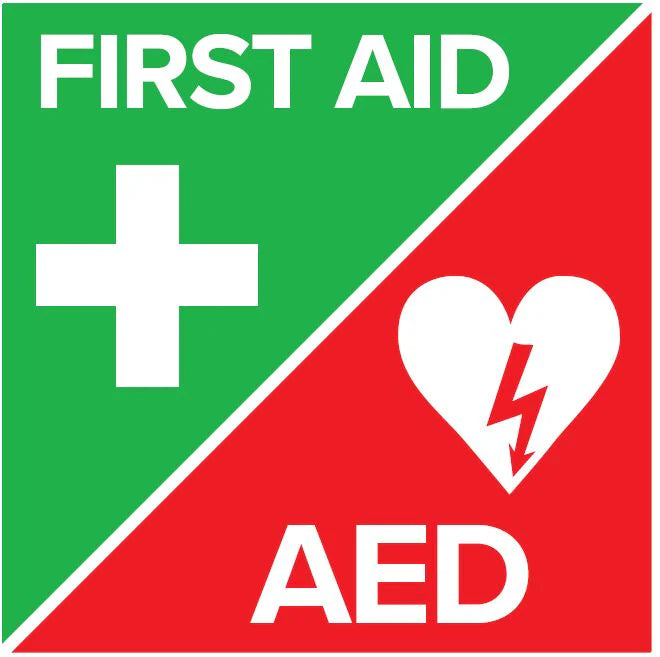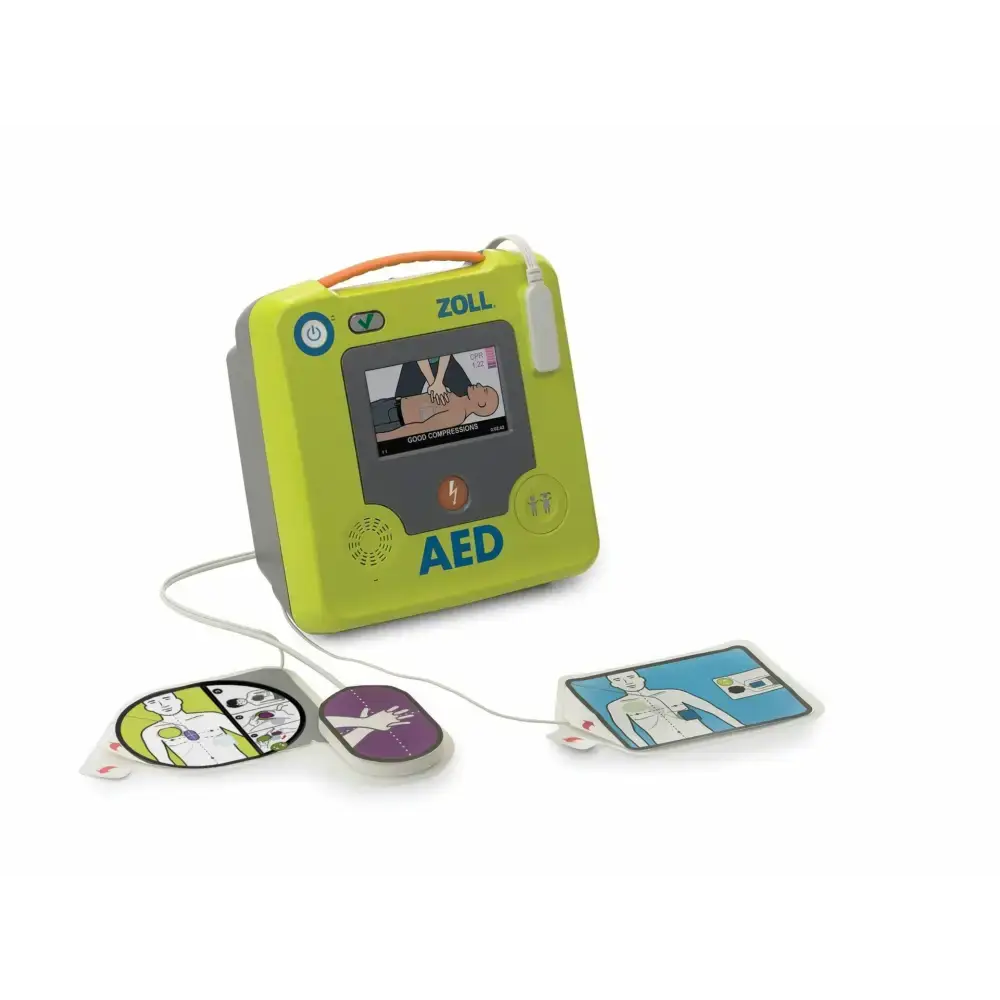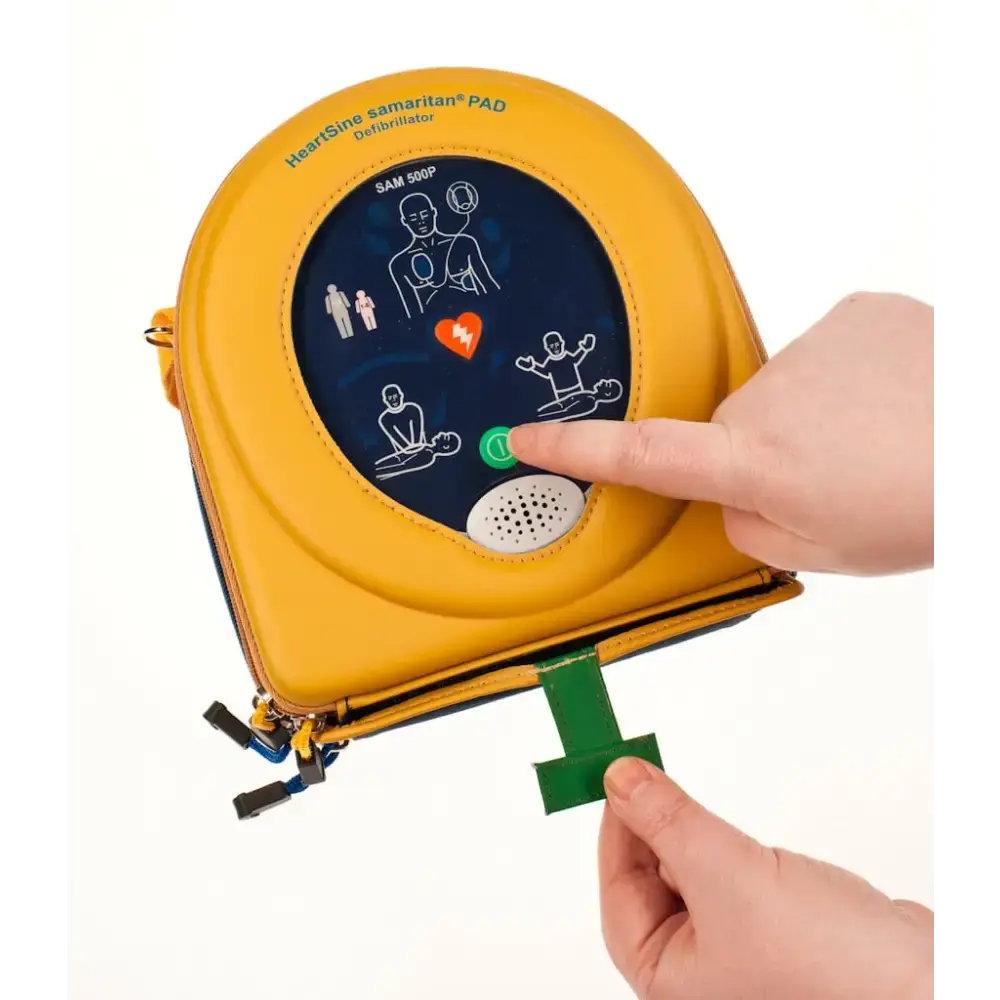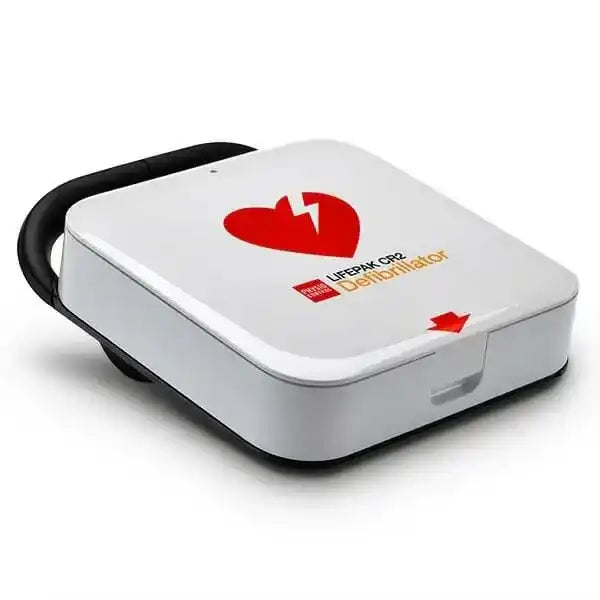Why AED Availability is Critical in Emergencies
In Canada, thousands of individuals complete First Aid, CPR, and AED certification courses each year. These trained individuals represent our first line of defense against sudden cardiac arrest (SCA) – a condition that claims approximately 50,000 Canadian lives annually. However, despite the growing number of certified responders, a critical gap remains in our emergency response framework: the actual availability of Automated External Defibrillators (AEDs) when and where they're needed most.

The Missing Link: AED Availability
Imagine this scenario: You've completed comprehensive AED certification training. You know exactly how to use an AED, you've practiced the proper placement of pads, and you understand the crucial role this device plays in survival. Then, when faced with an actual cardiac emergency, you discover there's no AED near me – no device within reach to put your training into practice.
This disconnect represents one of the most significant challenges in improving survival rates for out-of-hospital cardiac arrest in Canada.

https://aed.ca/products/zoll-aed-3
Understanding the Critical Time Factor
When someone experiences sudden cardiac arrest, the clock starts ticking immediately:
- After 4-6 minutes without defibrillation, brain damage becomes increasingly likely
- For every minute without defibrillation, survival chances decrease by 7-10%
- The average ambulance response time in urban Canadian areas is 8-12 minutes – often too late for optimal outcomes
These statistics highlight why having an AED in Canada readily available is as important as knowing how to use one. The effectiveness of CPR alone, while valuable, pales in comparison to CPR combined with prompt defibrillation.
AED vs. CPR: A Critical Distinction
There's often confusion about the relationship between AED use and CPR. Let's clarify:
| CPR (Cardiopulmonary Resuscitation) | AED (Automated External Defibrillator) |
|---|---|
| Maintains blood circulation | Restores normal heart rhythm |
| Provides oxygen to the brain | Delivers electric shock to restart heart |
| Can be performed by hand | Requires the physical device to be present |
| Buys time | Provides definitive treatment for many cardiac arrests |
| Survival rate with CPR alone: ~5-10% | Survival rate with CPR + AED: up to 75% when used within 3 minutes |
The comparison of AED vs. CPR is not about which is better – they are complementary interventions. CPR keeps oxygen flowing until defibrillation can be performed. However, in many cases of cardiac arrest, CPR alone cannot restore a normal heart rhythm.
Addressing the Availability Challenge
AED Requirements Across Canada
While AED requirements vary by province, there's growing momentum toward mandating these devices in public spaces. Currently:
- Ontario will soon requires AEDs in certain places according to Ontario Bill 141
- Manitoba has implemented AED registry programs
- British Columbia has expanded AED placement in recreational facilities and government buildings
Despite these initiatives, significant gaps remain in comprehensive coverage, particularly in:
- Remote communities
- Businesses
- Residential buildings
- Outdoor recreational areas
The Portable AED Solution
The evolution of portable AED technology has created new possibilities for expanding access. Modern AEDs are:
- Lightweight (some weighing less than 3 pounds)
- User-friendly with voice/visual guidance
- Durable for various environments
- Equipped with long battery life
These advances have made it increasingly feasible for more locations to maintain these life-saving devices.

https://aed.ca/products/stryker-heartsine
The Economic Consideration: AED Price and Value
A common barrier to widespread AED availability is the perception of high AED cost. It's important to put this investment in perspective:
The typical AED price in Canada ranges from $1,595 to $2,500, depending on the model and features. While this represents a significant one-time expense, consider:
- The typical AED has a lifespan of 8-10 years
- Maintenance costs are relatively minimal (new batteries and pads every 2-5 years)
- The potential return on investment in terms of lives saved is immeasurable
When calculated on a per-year basis over the device's lifetime, the cost of having an AED available works out to approximately $2-3 per day – less than many daily conveniences we take for granted.

https://aed.ca/products/stryker-physio-cr2-semi-auto-english-wifi
Where to Find an AED Near Me
Increasing public awareness about AED locations is another crucial element in bridging the gap between training and application. Several resources can help locate the nearest AED:
- Mobile apps like PulsePoint AED and AED-Alert
- Provincial AED registries (where available)
- Visual indicators and signage in public buildings
Making AEDs More Accessible
For organizations and individuals considering investing in AEDs, several paths can make acquisition more manageable:
- Explore grant programs: Some heart health organizations offer funding assistance
- Consider refurbished options: Certified refurbished units from reputable suppliers like AED.ca can reduce initial costs
- Implement cost-sharing: Neighboring businesses can share the expense and maintenance responsibilities
- Investigate tax incentives: Some jurisdictions offer tax benefits for organizations investing in safety equipment
Bridging Training and Application
To maximize the effectiveness of AED certification programs, we need a multi-faceted approach:
- Integrate availability planning into training: AED certification courses should include guidance on advocating for AED placement
- Expand public awareness campaigns: Education about how to use an AED should be coupled with information about finding devices
- Support community funding initiatives: Local fundraising efforts can help address gaps in AED coverage
- Develop innovative access models: Exploring concepts like AED sharing programs or "AED libraries"
Conclusion: The Complete Chain of Survival
Training in First Aid, CPR, and AED use represents just one link in what medical professionals call the "Chain of Survival." For this chain to function effectively, every link must be strong:
- Early recognition and call for help
- Immediate high-quality CPR
- Rapid defibrillation with an AED
- Advanced medical care
- Integrated post-arrest care
The absence of any link – particularly the critical defibrillation step – significantly weakens the entire chain.
As we continue to promote and expand training programs across Canada, we must simultaneously address the availability gap. Having an AED near me shouldn't be a matter of luck but a planned, systematic approach to public health.
By investing in both training and equipment, we create a more resilient emergency response system – one where trained responders have the tools they need when seconds count. After all, the most skilled responder can only be as effective as the tools at their disposal when an emergency strikes. Fore more information on AEDs contact AED.ca today.






